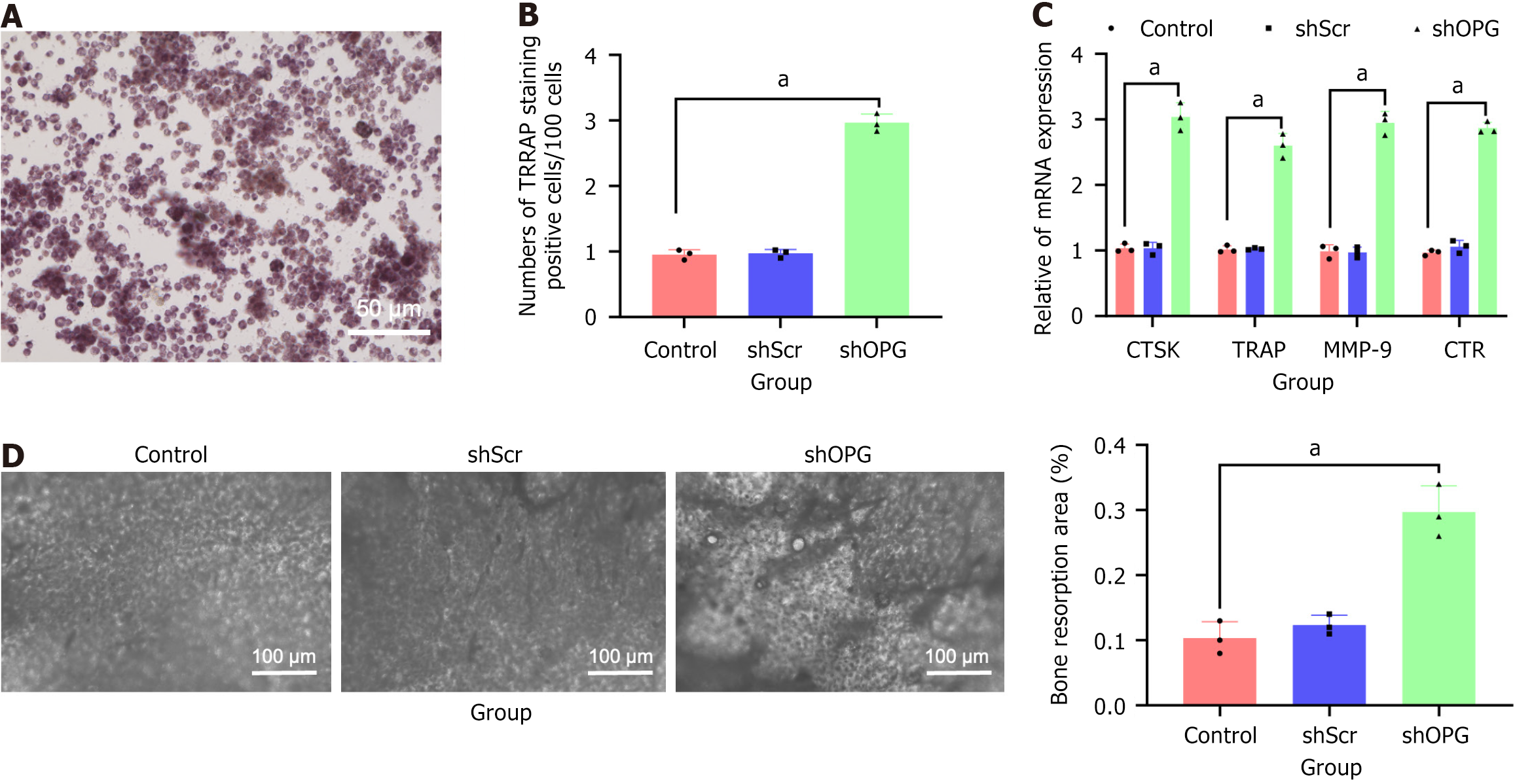Copyright
©The Author(s) 2025.
World J Stem Cells. Apr 26, 2025; 17(4): 101290
Published online Apr 26, 2025. doi: 10.4252/wjsc.v17.i4.101290
Published online Apr 26, 2025. doi: 10.4252/wjsc.v17.i4.101290
Figure 6 Representative regions of tartrate-resistant acid phosphatase-positive multinucleated cells in osteoclast generation experiment.
A and B: Results of tartrate-resistant acid phosphatase (TRAP)-positive multinucleated cells formed after 7 days of co-culture between the experimental group (shOPG bone marrow-derived mesenchymal stem cells) and non-adherent rat bone marrow stromal cells are shown in (A), along with the quantitative statistical analysis (B). TRAP-positive multinucleated cells (indicated by arrows; scale bar = 200 μm); C: Quantitative reverse transcription polymerase chain reaction analysis of mRNA levels of osteoclast marker genes cathepsin K, TRAP, matrix metalloproteinase-9, and receptors for calcitonin; D: Toluidine blue staining showing the proportion of resorption pit areas in co-cultured cells for each group, scale bar = 25 μm. Notably, the shOPG group exhibited significantly stronger osteoclast formation capability compared to the “shScr” and “control” groups. aP < 0.05. TRAP: Tartrate-resistant acid phosphatase.
- Citation: Wei SG, Chen HH, Xie LR, Qin Y, Mai YY, Huang LH, Liao HB. RNA interference-mediated osteoprotegerin silencing increases the receptor activator of nuclear factor-kappa B ligand/osteoprotegerin ratio and promotes osteoclastogenesis. World J Stem Cells 2025; 17(4): 101290
- URL: https://www.wjgnet.com/1948-0210/full/v17/i4/101290.htm
- DOI: https://dx.doi.org/10.4252/wjsc.v17.i4.101290









